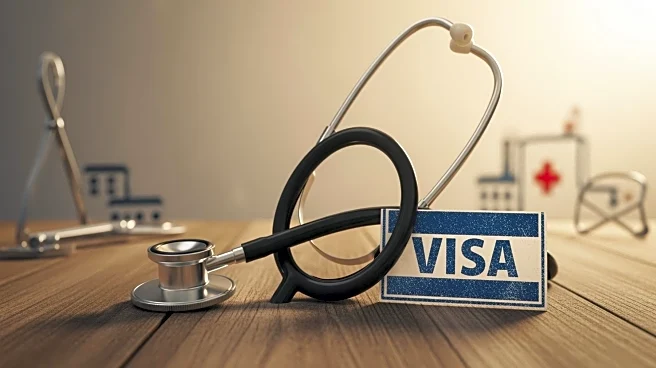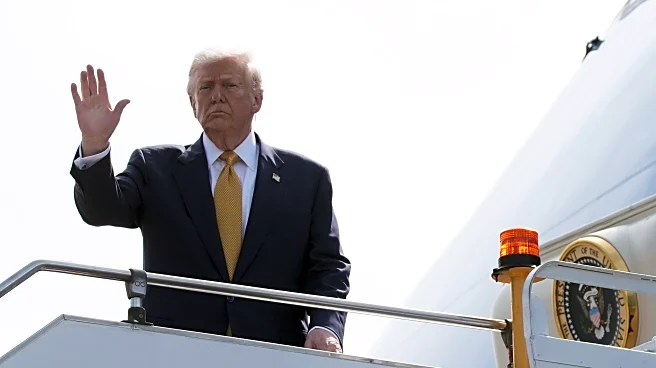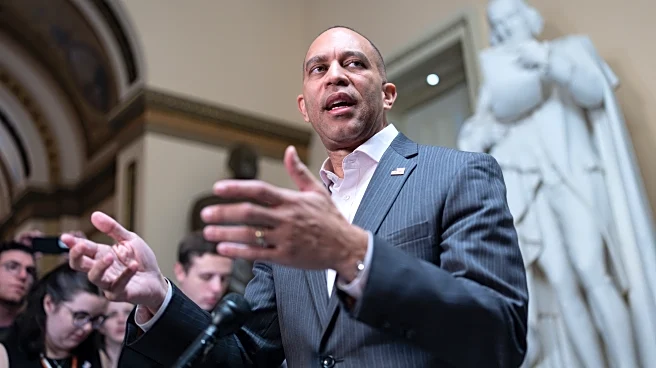What's Happening?
Medical educators and health professionals are expressing concern over new federal student loan caps introduced in President Trump's tax-cut law. These caps limit the amount professional degree students
can borrow to $50,000 annually, with a maximum of $200,000, which is significantly lower than the average cost of a four-year medical school education. The median cost for students graduating with an MD degree from a U.S. medical school is $318,825, according to the Association of American Medical Colleges. Critics argue that these financial constraints may deter individuals from pursuing medical careers, particularly those from low-income backgrounds, and could push students towards lucrative specialties in urban areas rather than primary care roles in underserved communities. The GOP legislation aims to curb the rise in federal student lending, which has been linked to increasing tuition costs.
Why It's Important?
The introduction of federal loan caps could have significant implications for the healthcare industry, particularly in rural and underserved areas where physician shortages are most acute. By potentially steering medical students away from primary care roles, the policy may exacerbate existing disparities in healthcare access. Additionally, the financial burden may discourage individuals from low-income backgrounds from entering the medical field, impacting diversity within the profession. While the caps are intended to reduce federal spending and encourage schools to lower tuition costs, the immediate effect may be an increased reliance on private loans, which often have less favorable terms. This shift could lead to higher overall debt for medical students, affecting their career choices and financial stability.
What's Next?
Medical schools may need to explore alternative strategies to reduce costs for students, such as offering accelerated programs that allow students to graduate in three years instead of four. These programs could help mitigate the impact of loan caps by reducing educational expenses and enabling students to enter the workforce sooner. Additionally, there may be increased advocacy for more flexible repayment options and debt forgiveness programs to support students affected by the new loan limits. The healthcare industry and educational institutions will likely continue to monitor the effects of these caps and seek solutions to address potential shortages in primary care providers.
Beyond the Headlines
The federal loan caps could prompt a reevaluation of the medical education system, encouraging schools to innovate in cost reduction and curriculum design. This situation may also highlight broader issues of equity and access in higher education, as financial barriers disproportionately affect students from marginalized communities. The policy could serve as a catalyst for discussions on how to balance fiscal responsibility with the need to maintain a robust and diverse healthcare workforce.












